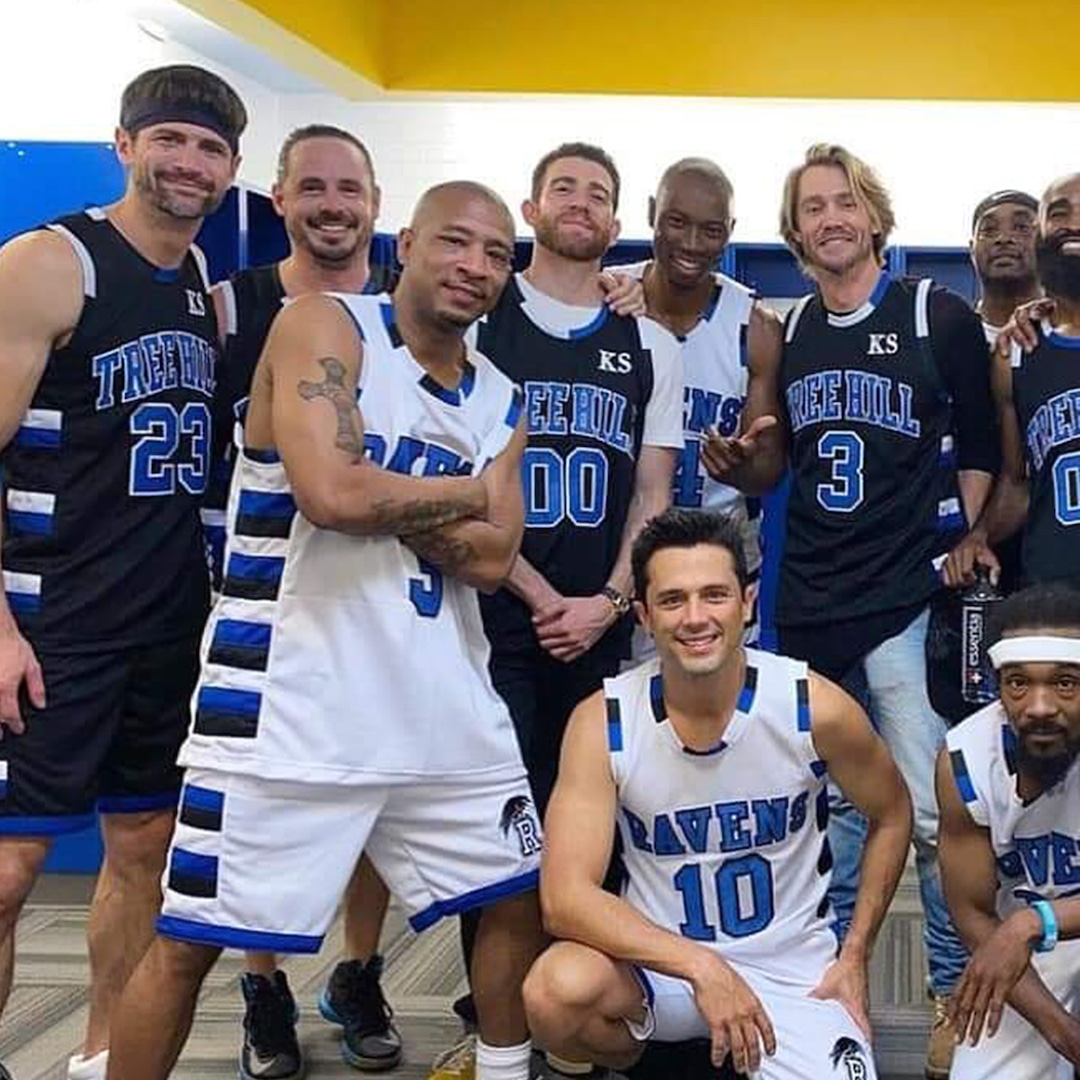Culture
LaToya Ruby Frazier is Paying it Forward at MoMA

A continuous high-pitched din — a bit whirring, a bit crunching — echoed over the Bottom, the residential sliver of Braddock, Pa., nearest to the industrial plants and the Monongahela River. It rose, indistinguishably, from the steel mill — the Edgar Thomson Steel Works, opened by Andrew Carnegie in 1875 and still operating — and the adjacent air separation plant, where gasses are piped into the mill or liquefied for shipment.
Also borne on the breeze was an unmissable acrid smell. It hung in the atmosphere on a Monday morning in April, over Washington Street. Not much was going on: Braddock, near Pittsburgh, had more than 20,000 inhabitants a century ago but now has fewer than 2,000. Still, some young people — Black, like four-fifths of the residents today — clustered around the Living Water Church, where a hearse parked outside indicated that a funeral was underway.
As I walked with the photographer LaToya Ruby Frazier — who grew up on Washington Street and made there the documentary work about her family, at once poetic and unflinching, that cemented her reputation — my nose and throat started to tingle.
“Oh yeah,” Frazier said. “The longer you’re here, the heavier it’s going to get.”
Braddock has a history of high levels of air pollution and respiratory disorders, as well as infant mortality. Pollution from the steel mill remains a public health concern: In 2022, U.S. Steel, which owns the plant, agreed to a $1.5 million fine and promised improvements in a settlement with the Environmental Protection Agency and county health authorities.
Frazier has the autoimmune disease lupus. “I shouldn’t be down here too long, because my health has been so adversely affected,” she said.
The smell thickened as we neared the factories. The gas plant occupies the site of Talbot Towers, the public housing complex where Frazier’s family lived when she was born, in 1982, and that was torn down in 1990. Across the street sits the brick husk of another church, where she attended Bible study. An inscription on its facade — “You must be born again! Of water and spirit” — has appeared in her photographs.
“It’s almost like an out-of-body experience, right?” Frazier said over the noise, as brightly painted coal tipper trucks turned into the factory gates.
“But this is what I felt and knew as a kid. I always had a feeling as a little girl that there were two realms. The physical realm — yes, we’re on Washington Street, walking toward the steel mill — but then there was the spiritual realm. That these spiritual forces were always surrounding me — just like the history.”
This weekend, Frazier’s survey exhibition, titled “Monuments of Solidarity,” opens at the Museum of Modern Art. At 42, she may be America’s foremost social documentary photographer now. Her work charts the experience of working-class people around the country as they face compounding challenges of deindustrialization, environmental degradation and inequality. Through it all, her hometown Braddock remains her best template for understanding the world.
She first made her mark with “The Notion of Family” (2001-14). It portrayed over many years her grandmother Ruby, who raised her; her step-great-grandfather, known as Gramps; and her mother, Cynthia, notably in jointly composed mother-daughter portraits. Autobiographical and interior, the work gradually opened to Braddock’s battered terrain and the local activists resisting its decline. It earned Frazier inclusion in the 2012 Whitney Biennial and a MacArthur “genius” fellowship in 2015.
After that, she widened her field. In “Flint Is Family” (2016-20), she chronicled over years how some residents of Flint, Mich., coped with the water crisis that began in 2014 when authorities switched the public supply to the polluted Flint River. It has yet to be resolved.
In 2019, she spent nine months with members of the United Auto Workers in Lordstown, Ohio, after General Motors abruptly announced the closure of its plant there. Her project, which began as a commission for The New York Times Magazine, expanded into “The Last Cruze,” an installation of photographs, video and text interviews of some 60 workers — diverse by race, gender and age — that premiered at the Renaissance Society in Chicago.
And during the pandemic, she spent weeks in Baltimore photographing Black and working-class community health workers who deployed in the city to connect a vulnerable population to medical and support services. “More Than Conquerors,” featuring dozens of these workers and in some cases their families, received the top prize in the Carnegie International exhibition in 2022.
Gathering these and other projects, the MoMA survey traces, for the first time in one place, Frazier’s journey toward this kind of civic polyphony. Her portraits of individuals or groups are collaboratively posed in homes, parks and workplaces. Accompanying them are extensive interviews that she conducts herself and excerpts, often at length, in her photo books and exhibition displays.
She opens space, as well, for grass-roots artists. In Flint, two poets, Amber Hasan and Shea Cobb, became her confidants and local entree. In a video Cobb, a school bus driver by day, delivers a forceful poem, then narrates Frazier’s images. In Lordstown, Kasey King, an auto worker and U.A.W. photographer, shot inside the plant — where Frazier was denied access — as the last Chevrolet Cruze moved through production. The slide show of those often emotional images, with King narrating, runs nearly one hour.
Frazier’s subject matter locates her in the engagé tradition that includes Lewis Hine, who photographed notably in Pittsburgh in the early 20th century; Dorothea Lange; Walker Evans; or one of her great inspirations, Gordon Parks. But her methods expand this canon, said Roxana Marcoci, the MoMA senior curator who organized “Monuments of Solidarity” with Caitlin Ryan, an assistant curator, and Antoinette D. Roberts, a curatorial assistant.
“Like Parks, she sees the camera lens as a radical tool for resistance,” Marcoci said. But by “centering on the act of looking after and listening to the people whom she is representing in her work,” Marcoci added, Frazier’s projects invite viewers to think alongside them, rather than regard them as subjects.
The survey is not a full retrospective; missing, for instance, is Frazier’s one overseas project, in 2017, with photographs and interviews of coal miners in Belgium’s Borinage region. But it includes her newest series, “A Pilgrimage to Dolores Huerta,” the labor and civil-rights leader, whom she interviewed in California last year.
Frazier and Marcoci have imagined each section of the exhibition as a “monument” to the people it includes, with photos and texts displayed on structures that recall, for example, an assembly line. “All I’m doing is showing up as a vessel,” Frazier told me, adding that she wants to “turn MoMA into a museum of workers’ thoughts.”
Braddock Explains the World
Talbot Towers is long gone. The house at 805 Washington Street, where Frazier lived with Ruby and Gramps, is gone. Braddock Hospital, where Ruby died in 2009, was closed by the regional hospital system in 2010 — depriving the town of medical services and its biggest employer — and then demolished, leaving no physical trace.
Such disappearances, Frazier pointed out, stem from decisions. “Nothing just collapses,” she said. “These things are done over time through policies, laws, rezoning and dispossession. And the erasure,” she added, “leads to the historical amnesia that my work tries to combat.”
On Washington Street, the junior high school that Ruby attended has stood empty and boarded up all Frazier’s life, she said. Television news painted Braddock as a danger zone. “‘Don’t drive through Braddock. Braddock is a ghost town.’ But I was being shielded and guided by my grandmother. I felt like this was home.”
When she began “The Notion of Family” — encouraged by Kathe Kowalski, her college mentor at Edinboro University in Pennsylvania to take on even the intimacies of her family’s ill health — she was trying to understand herself, and where she came from. But in the process, she said, she came to grasp how the town declined.
A rezoning map of the period, for instance, showed how residential housing came to be replaced by industry. It reclassified much of the Bottom, devaluing the property of Black homeowners. A discrimination case on behalf of Talbot Towers’ residents dragged on for years through consent decrees and partly executed settlements.
The announcement of the hospital’s closure shocked the artist, coming so soon after her grandmother’s death there. But she now had a framework for understanding it. The protests that followed, although unsuccessful, would play a pivotal role in her photographic work, motivating her for the first time to come out and document grass roots action.
The activists taught her about organizing and civil disobedience. “That’s when the work became plural,” she told me. “It was time to come outside. The personal was political now.”
After graduate school at Syracuse University, Frazier taught at Rutgers University and at the School of the Art Institute of Chicago. She prefers not to say where on the Eastern Seaboard she currently lives. But when she says “home,” she means Braddock. “It’s important that you have to establish being from a particular place,” she said. “I certainly started here, and I continue.”
She makes a self-portrait whenever she is back — it’s her ritual. She invited me to follow her up the hill to an iron footbridge spanning the railroad track, at the top of Frazier Street. The name commemorates John Frazier (or Fraser), the Scottish settler who procured land from the Lenape Queen Aliquippa in the mid-18th century. The shared last name is likely a coincidence, but she finds it intriguing.
But the bridge was gone. It was torn down a few years ago, a neighbor said.
Frazier made the photograph anyway, holding a rolled-up map of Braddock from 1876. “The bridge is gone, and here I stand,” she said. “I’m using myself as a marker.”
“It’s important for people of color in this country to mark where you were,” she added. “Say the year, say the street, say the intersection, say the time of day. We have to be hypervigilant about saying we were in a certain place and time. Because they’ll say we weren’t.”
What she wants for the people she photographs, I realized, is what she wants for herself.
Ask people who appear in Frazier’s images how their trust was formed, and they speak of her personal rapport, her sincerity, her blue-collar roots, even divine intervention. “She’s a bridge over troubled waters,” said Cobb, the poet in Flint, who with Hasan has joined Frazier on panels around the country.
“Our souls touched,” said Frances Turnage, a retired auto worker in Lordstown who, when Frazier arrived, was still active with the union women’s group. But most important, Turnage added, Frazier had simply shown up. “She cared enough to want to tell our stories. We appreciated it because our voice was never heard, our concerns never recognized. Nobody came down to our level.”
Sandra Gould Ford met Frazier at a Pittsburgh conference in 2015. In the 1980s, Ford had worked at the Jones & Laughlin steel mill in Pittsburgh before it shut down. There, breaking the rules, Ford made photographs: Workers on the coke oven, decommissioned furnaces, office bulletin boards. She interviewed co-workers, collected company documents and wrote her memories of the job.
“It blew me away,” Frazier said. “She’s like a national treasure.” In an uncanny connection, Ford had lived briefly in Talbot Towers when Frazier was born.
In 2017, the two women presented an exhibition, “The Making of Steel Genesis,” at the August Wilson Center in Pittsburgh. It joined Ford’s factory images with new portraits of her by Frazier, who added cyanotypes of documents. In the MoMA installation, an audio remembrance by Ford plays in the gallery.
Frazier led the fund-raising for the August Wilson Center project. It’s her duty, she told me, to redirect resources from galleries and collectors, where she has influence, to people that become part of her projects. Especially for local working artists, who are often overlooked.
In Ford’s dining room in the Homewood section of Pittsburgh, the two women reminisced about how Frazier spent days scanning Ford’s photographs while Ford worked at her typewriter.
“In every community there are people like Sandra,” Frazier said. “But people take folks for granted when they’re born and raised from a place.”
Ford interjected. “That’s why I told LaToya, it was good that she left Pittsburgh.”
“It’s hard to hear that,” Frazier replied. Then she added: “But Sandra is the reason someone like me comes back, paying it forward.”
“Monuments of Solidarity” isn’t just a celebration, Frazier told me. It’s also a challenge to “show up for other people.”
She went on: “The people that are in all these valleys, they already have the power. I’m just saying, ‘Hey y’all, look at this amazing power, look at this amazing light.’”





















